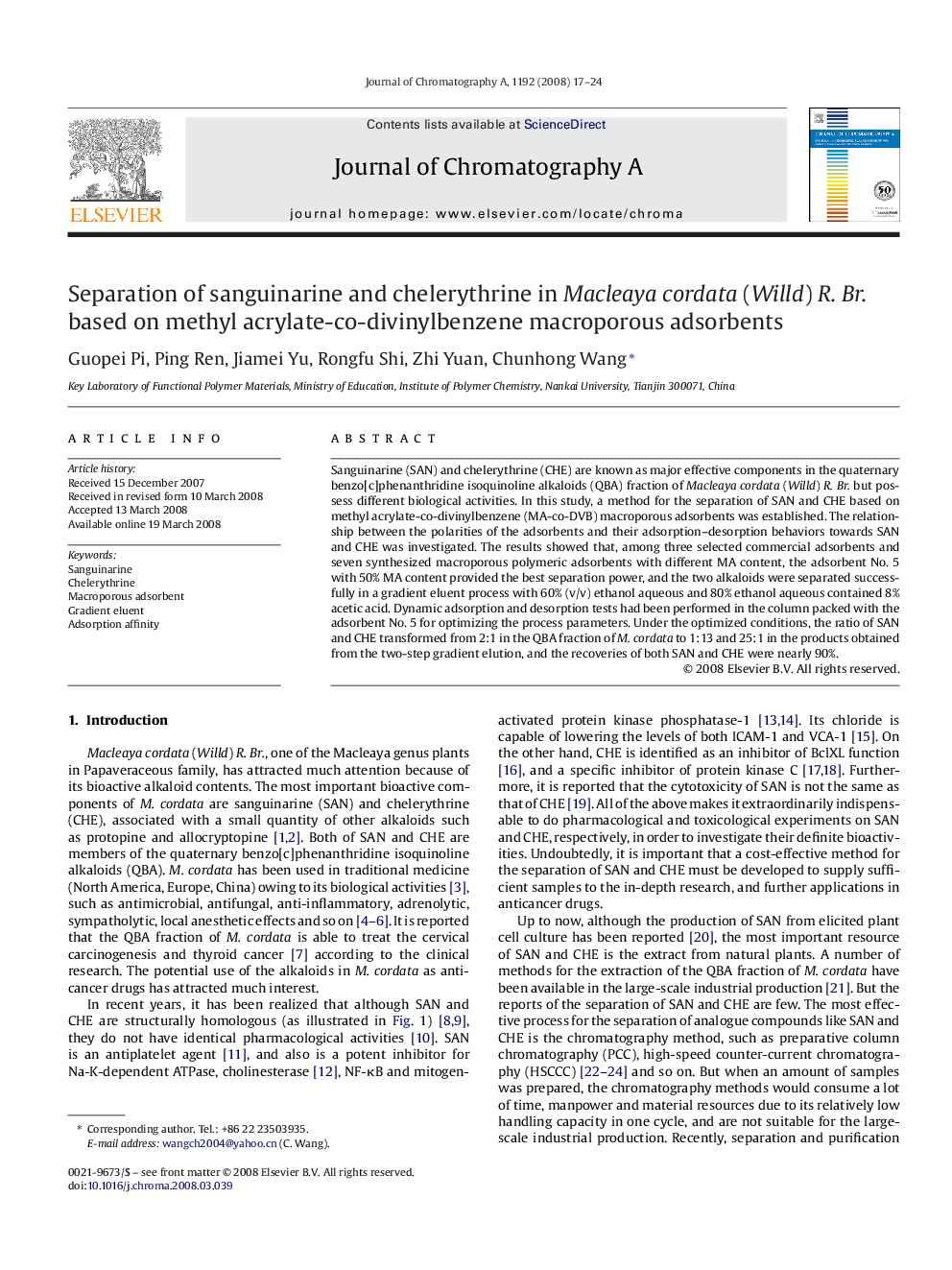| Article ID | Journal | Published Year | Pages | File Type |
|---|---|---|---|---|
| 1207129 | Journal of Chromatography A | 2008 | 8 Pages |
Abstract
Sanguinarine (SAN) and chelerythrine (CHE) are known as major effective components in the quaternary benzo[c]phenanthridine isoquinoline alkaloids (QBA) fraction of Macleaya cordata (Willd) R. Br. but possess different biological activities. In this study, a method for the separation of SAN and CHE based on methyl acrylate-co-divinylbenzene (MA-co-DVB) macroporous adsorbents was established. The relationship between the polarities of the adsorbents and their adsorption-desorption behaviors towards SAN and CHE was investigated. The results showed that, among three selected commercial adsorbents and seven synthesized macroporous polymeric adsorbents with different MA content, the adsorbent No. 5 with 50% MA content provided the best separation power, and the two alkaloids were separated successfully in a gradient eluent process with 60% (v/v) ethanol aqueous and 80% ethanol aqueous contained 8% acetic acid. Dynamic adsorption and desorption tests had been performed in the column packed with the adsorbent No. 5 for optimizing the process parameters. Under the optimized conditions, the ratio of SAN and CHE transformed from 2:1 in the QBA fraction of M. cordata to 1:13 and 25:1 in the products obtained from the two-step gradient elution, and the recoveries of both SAN and CHE were nearly 90%.
Related Topics
Physical Sciences and Engineering
Chemistry
Analytical Chemistry
Authors
Guopei Pi, Ping Ren, Jiamei Yu, Rongfu Shi, Zhi Yuan, Chunhong Wang,
